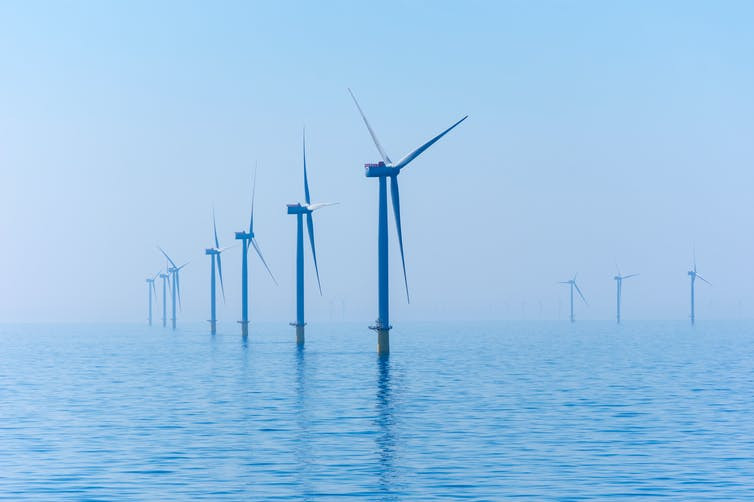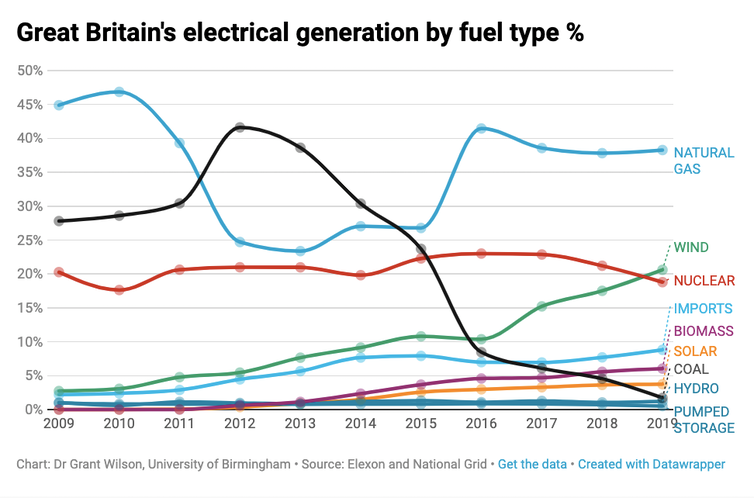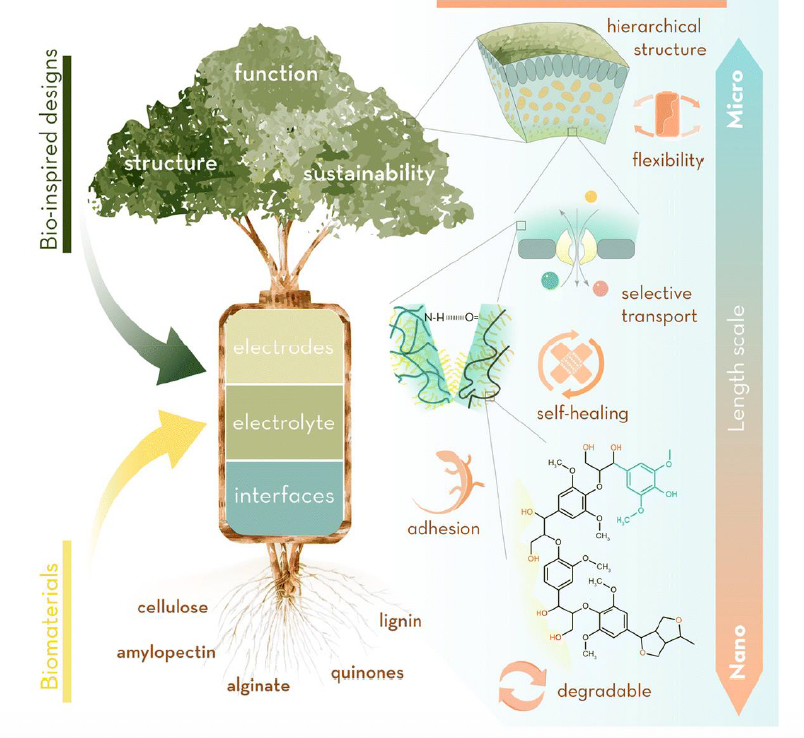
Britain’s electricity since 2010: wind surges to second place, coal collapses and fossil fuel use nearly halves

Few people would have predicted in 2010 that by the end of the decade, electricity generation from renewables would outpace nuclear.
J Davidson/Shutterstock
Grant Wilson, University of Birmingham; Iain Staffell, Imperial College London, and Noah Godfrey, University of Birmingham
In 2010, Great Britain generated 75% of its electricity from coal and natural gas. But by the end of the decade*, these fossil fuels accounted for just 40%, with coal generation collapsing from the decade’s peak of 41% in 2012 to under 2% in 2019.
The near disappearance of coal power – the second most prevalent source in 2010 – underpinned a remarkable transformation of Britain’s electricity generation over the last decade, meaning Britain now has the cleanest electrical supply it has ever had. Second place now belongs to wind power, which supplied almost 21% of the country’s electrical demand in 2019, up from 3% in 2010. As at the start of the decade, natural gas provided the largest share of Britain’s electricity in 2019 at 38%, compared with 47% in 2010.

Chart: Dr Grant Wilson, University of Birmingham Source: Elexon and National Grid, Author provided
As we predicted last January, 2019 saw the annual total for coal generation drop below solar and into seventh place for the first time. Britain’s renewables also generated more electricity than coal and natural gas combined over a month for the first ever time in August.
This article is republished from The Conversation under a Creative Commons license. Read the original article.













